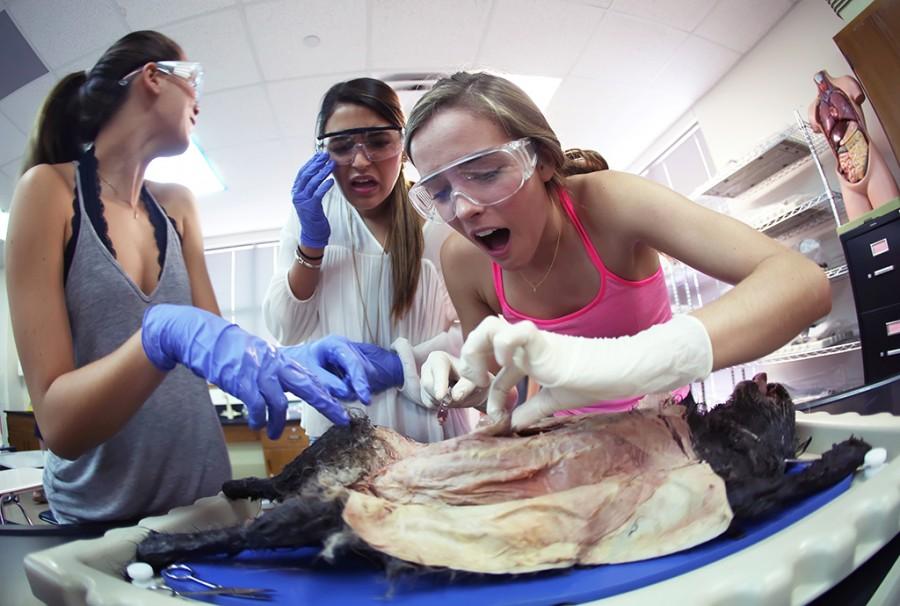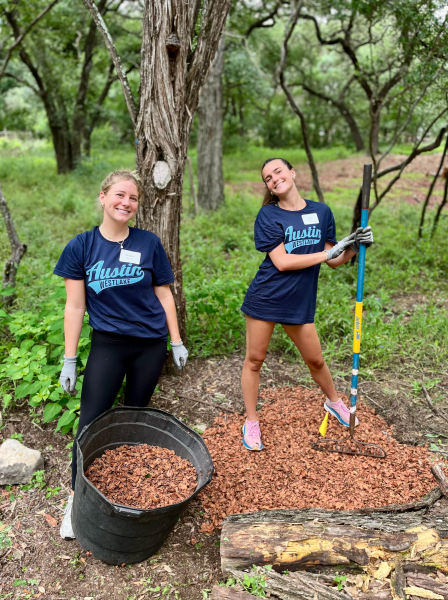Anatomy and Physiology students perform the ‘Cat Dissection’ lab
According to the old proverb, there’s more than one way to skin a cat, but in Anatomy and Physiology, students were lucky enough to be given step-by-step video directions. The cat-dissection lab was the culmination of the two-semester course, which many took as a third-or-fourth-year science. The lab took two weeks and involved a detailed examination of the animal’s organs.
“The class is the study of human [bodies], so we really focus on the things on the cats that are comparable to humans,” Anatomy and Physiology teacher Kim Riley said. “For example, we have three lobes on the right side of our lungs and two on our left while cats have four lobes on the right side and three on the left, but that’s a minor difference. Overall, cat anatomy is very similar to human.”
The cats came from a scientific company that purchases and prepares the bodies of euthanized animals for research purposes, and, as they arrived in the classroom looking much as they did in life, the first order of business was to skin them.
“[When we first saw it,] the cat was on its back with all its legs spread out,” senior Brittany Wetmore said. “There was a cut at its neck where the dye had been injected into the veins and arteries.”
After the skinning, students dissected the lungs, liver, intestines, ovaries or testes, kidneys and heart. Each class period received one or two pregnant specimens as well, giving students a chance to see the uterus and the fetuses they contain.
“The most interesting part was when they took the fetuses out of the pregnant cats,” senior Lulu Shultz said. “There were two pregnant cats; one of them had two medium sized kittens, and the other one had like four or five tiny ones, about the size of my thumb. They were kind of shriveled up and pathetic looking and didn’t have any hair.”
On the last day of the dissection, students examined organs not included in the official rubric, like the stomach and gallbladder. The only major organ that wasn’t covered was the brain.
“We do not do the brain for lack of the ability to get to it,” Riley said. “It would require a bone saw, and it’s not a part of the official dissection. I believe that if you want to dissect a brain, you order them separately because they are so hard to get out.”
In her 15 years of teaching, Riley has seen reactions from her students that range from disgust to enthusiasm, but she’s found that most students, even ones who go into the lab dreading it, end up becoming extremely interested.
“Because it’s an elective class, [all the the students] elected to be in here,” Riley said. “I talk them through [the lab], and it’s not like I say, ‘You have to make exactly four cuts’ or something. You just have to be a part of it. You have to glove up, and you have to be there. How much you touch the cat, how much you interact with the cat, is up to you, but there is no alternative assignment. And I think that once we finish, everybody is glad that they got the chance to do it.”
The lab is an expensive one, and Riley said she feels that Westlake students are very fortunate to have the opportunity to dissect a large mammal before they even begin college. However, it’s not always easy for people who have pets of their own. For Lulu, who describes herself as a cat person, the hardest part of the lab was at the beginning, when she couldn’t stop thinking about how much the specimen resembled her own cat, Winston. However, her interest in medicine and anatomy trumped her sentimentality, and she soon got over her qualms.
“If you go into it with an open mind, it’s really not as gross as you think it’s going to be,” Lulu said. “A lot of people were like: ‘This is gonna suck; this is gonna be so gross,’ but once you get into it it’s a lot more interesting and fun than you expected it to be.”






